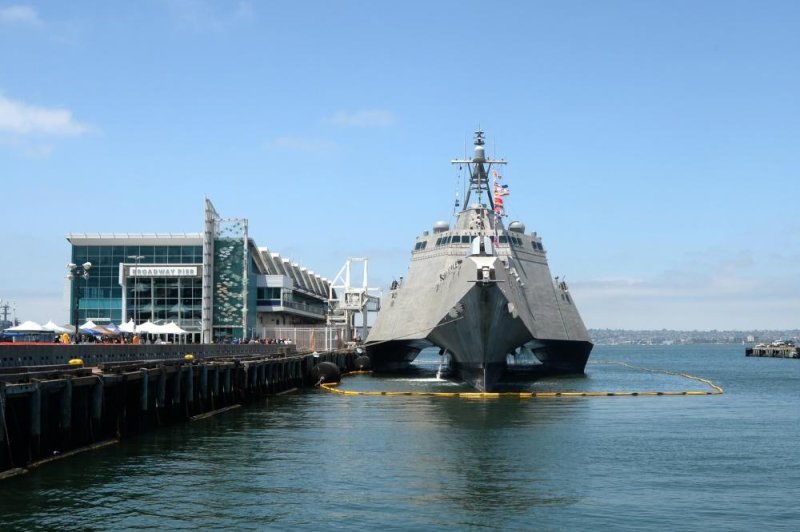Austal USA and Lockheed Martin have been contracted by the U.S. Navy for construction of the next Littoral Combat Ship, the Freedom-class LCS 27. Pictured, the Independence-class LCS USS Gabrielle Giffords. Photo by Petty Officer 1st Class Melissa Russell/U.S. Navy
Oct. 9 (UPI) -- The U.S. Navy's next generation of assault transport vessels were given the financial green light, the Defense of Department announced Friday, despite a legacy of questions concerning survivability in hostile environments.
Austal USA and Lockheed Martin Corp., both global manufacturers of naval defense ships, were awarded contracts not-to-exceed the congressional cost cap of $584 million for the construction of a littoral combat ship, or LCS, for the Department of the Navy.
The companies are responsible for handling the design, construction, and test trials of the LCS with the Pentagon expecting to release future announcements for competitive solicitation for additional LCS class ships, according a the Pentagon press release.
Work on the LCS by Austal USA is expected to be completed by October 2023, with 54 percent of the labor occurring at their headquarters in Mobile, Alabama. Lockheed Martin has the same projected delivery time frame with the bulk of the assembly, accounting for 37 percent of the LCS's construction occurring in Marinette, Wisconsin.
The LCS is designed for naval operations against asymmetrical threats and anti-access obstacles in littorals near the coastline, according to the Navy. The LCS sports a flight deck and hangar for housing two SH-60 or MH-60 Seahawk helicopters and can deliver a small assault force that can deploy off the ship itself. Currently, the Freedom and Independence class are the first of the two LCS variants. The USS Freedom made its inaugural deployment for sea trials in February 2013.
In July 2017, the Navy sought information for a new multi-mission guided-missile frigate that can perform the same roles as the LCS, capable of better offensive and defensive capabilities.
A 2010 report by the Defense Department's Operations Test and Evaluation office raised concerns over Lockheed's LCS ship construction as it did not meet the Navy's stability requirements, in addition to multiple failures of the ship's TRS-3D radar, a system used for conducting surface and air surveillance and rapid target acquisition of enemy threats.
Since the report, contracting companies have addressed bolstered the bulkheads of the LCS and the Navy laments the ship could still be used in hostile areas because it would be escorted and protected by other naval ships with greater armament and armor.
The Navy Times reported in December 2015, that Ash Carter, then the Secretary of Defense under President Barack Obama, ordered the Navy to reduce the planned procurement of LCSs to its naval fleet from 52 to 40 vessels.















